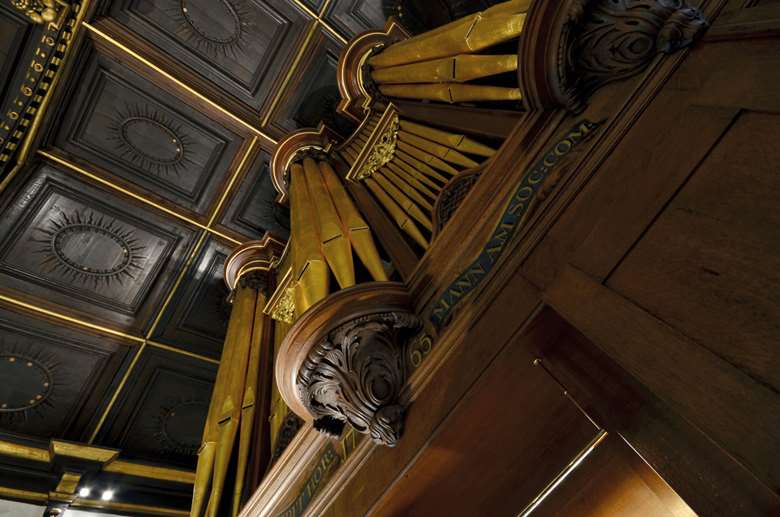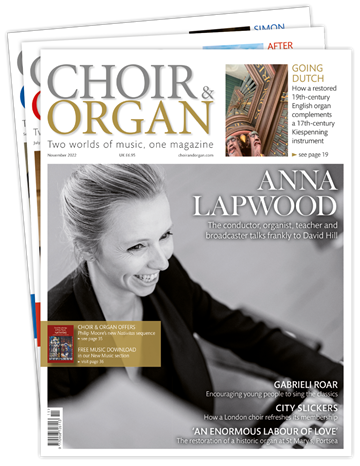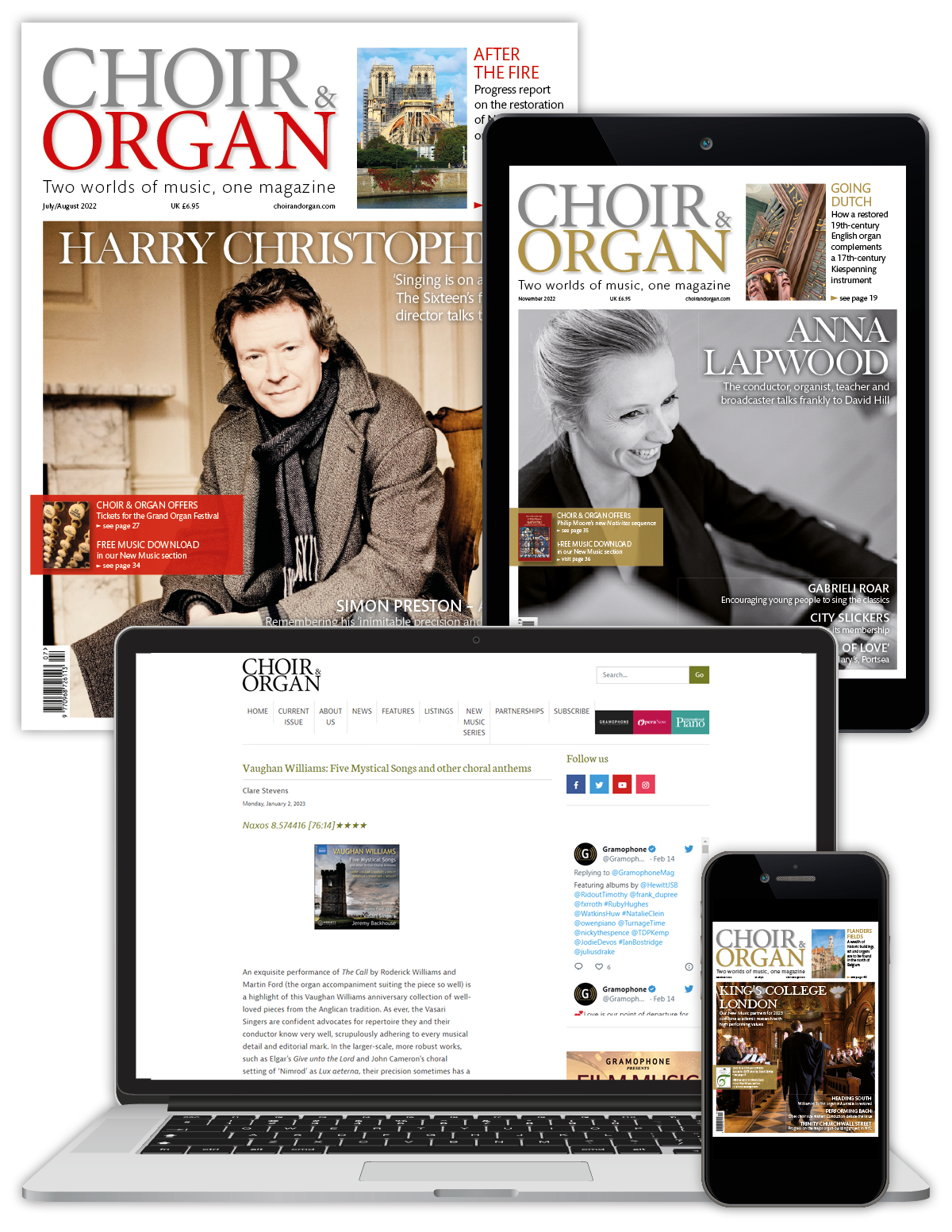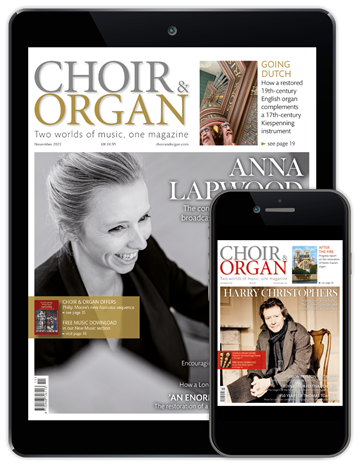The past and future of the organ at Peterhouse, Cambridge
Chris Bragg
Friday, May 10, 2024
At Peterhouse, Cambridge, a desire to honour the college’s legacy of 18th-century material, in an organ required to accompany the liturgy, has led to a novel outcome

It is the nature of 21st-century organ discourse that those debates which, 100 years ago, played themselves out in the letters pages of The Organ now ferment in near-real-time on social media. Often heated, most boil down to a fundamental juxtaposition of ambitions: Does the new or restored organ in question (the latter a much-misused term in the UK) do its ‘job’? versus Does it fulfil its aesthetic identity? This juxtaposition pre-dates even The Organ. As early as 1847, the 27-year-old John Sutton published his Short Account of Organs Built in England as a gesture of defiance against the destruction of pre-Industrial Revolution instruments. ‘The general excuse for removing them,’ he writes, ‘…is…that they are totally unfit for the performance of the music of the day.’1 One wonders what Sutton would have made of Facebook, where new organs in particular are often dismissed by the keyboard warriors long before a note has sounded. The instrument under review here was no exception; the battleground known both to Sutton and to the virtual protagonists made manifest.
The organ at Peterhouse, Cambridge, was originally built as a GG-compass instrument by Swiss émigré John Snetzler in 1765, the gift of Fellow Commoner, Horatio Mann. It possessed just two manuals at the console. The lower keyboard also controlled three (or four?) tenor-G stops housed in a ‘nag’s head’ swell box, tubed-off from the Choir soundboard. Despite documentation from the Revd W E Dickson, who had known the organ in the 1840s as an undergraduate, and by Sperling who documented it 10 years later, certain details remain unclear. For example, was the Cornet really a separate mounted stop as Sperling suggests or was it the treble of a Sesquialtera/Cornet hybrid? A later source (?Leffler, c 1820, transcribed by C W Pearce, 1912) suggests the latter, as does the absence of any historic pipes belonging to a separate cornet.2
Inevitably, the organ evolved. John Avery added an octave of 8ft pedal pipes in 1804, Elliott and Hill added an inter-manual coupler in 1830, the nag’s head swell became a Venetian swell in 1836.3 William Hill added two octaves of open 16ft pipes in 1852, grandson Arthur returned, shortly after the death of his father Thomas, to rebuild the organ with three manuals, 19 stops and German compasses in 1894. At this time Snetzler’s soundboards, winding system and actions disappeared and various pipes were either replaced or displaced. In 1964, N P Mander enlarged it to 33 stops (including much extension on the electric-action Pedal division) with a new console. The organ now extended backwards to the west window.
The survival of 10 Snetzler stops-worth of pipes, in addition to the case, led to the possibility, when Mander’s iteration inevitably deteriorated, of the 1765 instrument being reconstructed. Peterhouse, however, favoured an organ on which the ‘modern’ Anglican liturgy could be accompanied, while respecting Snetzler’s material. Nevertheless, the notion of a reconstruction remained tantalising, as no large Snetzler organ has survived, and because Snetzler’s pipe-markings rendered the return of the original pipework to its original functions relatively straightforward. The ubiquitous battle of aesthetics versus utility had reared its head, even if the perception of that utility in turn laid bare the finest of lines between tradition and affectation. After all, if one acknowledges the late-Romantic-centricity of the prevailing Anglican accompanimental style (to say nothing of the more-or-less common centre of musical gravity practised by former Oxbridge organ scholars out in the ‘field’), what role should organs at odds with that world-view play? Might the organ itself, and indeed the physical and acoustic environment in which it resides, not also influence a place’s musical point of orientation? Was Sutton’s enthusiasm for the accompaniment of choral services on organs by Smith and Harris so misplaced? Cambridge, after all, is a town with organs of many flavours at 100-yard intervals; must they all resemble each other?
Initially with no director of music at the tiller, the present Peterhouse project was steered from its earliest days with extraordinary diplomacy by director of development, the late Dr Saskia Murk-Jansen, who was keen to let tendering builders devise their own solutions. However, those builders inevitably favoured either the aesthetic/historic or the utilitarian path and with Peterhouse’s desire to fulfil both competing prerogatives, advisor the late Catherine Ennis suggested that two of the builders in question, Klais and Flentrop, whose proposals had much in common, work together. The result might be described as a semi-pragmatic English compromise, forged jointly in Bonn and in the Zaanstreek. The organ has two consoles: one en fenêtre recreating the playing experience of 1765, albeit with the Echo and Choir divisions separated out to form a three-manual concept; the other on the south side is altogether more conventional, combining the Choir stops (from C) with those of the Echo (extended down to C) to form a Swell division. An independent Pedal division of three stops is also available. It spills out of the back of the case none too elegantly; a compromise necessitated by Peterhouse’s desire to free up the area directly in front of the west window for the purposes of allowing natural light into the antechapel.
The resulting organ is, understandably, mechanically complex. The Choir soundboard, for example, stands in a swell box. In addition to the four GG-compass Choir stops, the Echo stops are tubed off, standing in a nag’s head enclosure inside the larger box. The soundboard has extra note channels in the bass for the lower portion of the Echo stops required for the second console’s Swell, and yet more for those stops exclusively available on that console. The case is quite full as a result.
Unsurprisingly, the reconstructed Snetzler console, beautifully crafted, immediately invites sensitive musicianship. The Choir touch is somewhat challenging, relatively deep but speaking fully within the first 1-2mm of key movement. The playing experience leads naturally to a sound-world familiar to the Moravian clients Snetzler had served earlier in his career: ‘pleasant…agreeable…subtle’, as he himself described the sounds of his 1740s organ in Fulneck, ‘typical, pietistic mid-European adjectives’, as Barnes and Renshaw note.4 In a space as intimate as the 17th-century chapel at Peterhouse, the marriage of space and sound is one forged obviously of artistic conviction. The new reeds are excellent; noteworthy, given that only hautboy (and a single trumpet) Snetzler pipes survive elsewhere. They blend outstandingly with the Sesquialtera-topped chorus. Unconventional, and perhaps slightly decadent, the two-console solution has allowed Peterhouse, and Cambridge, to gain a unique and pedagogically significant playing experience. Among other things, this allows much English repertoire composed for three-manual organ with GG-compass Great
and Choir and short-compass Swell. An important achievement.
But what of the ‘modern’ console and its inherent implications? It stands proud of the south side of the case, in order to leave the original panelling intact. Its proximity to the gallery edge means one cannot pass between consoles (unless one is exceptionally svelte) without returning downstairs and ascending the opposite staircase. The console is terraced, with electric stop action (inevitable given the mechanical complexities), a plethora of playing aids relative to the number of speaking stops, balanced swell, digital display and radiating-concave pedalboard; ‘all the comforts’ to quote the Klais website. As such, it does what one might expect, albeit with a somewhat uninspiring touch (firm, if not unmanageably heavy, all the way to the base of the key movement). But ‘all the comforts’ and the mode of music-making these invite, are uncomfortably removed from Snetzler’s sound-world, which dictates, almost entirely, the organ’s aural persona. Attending evensong was illustrative; the sense of beguilingly charming tonal material being channelled through a late-Romantic expressive prism was unavoidable.
If one accepts the dual-console solution, what form might the second console have taken? Perhaps a clue lies in the organ’s history. Hill’s console of 1893-94, with its trio of composition pedals each to Great and Swell and another for Great to Pedal, together with a (presumably) trigger swell, offered standardised compasses and an enclosed division. A similar ethos would have imposed a more chaste registration practice both on player and pipework, to the benefit of both. The implication that the tonal nature of any organ and its point of interface can be entirely divorced is dangerous, not least with a view to the future conservation of old instruments. At a deeper level, the accessories are there to be used and, given that the organist hears much less of the instrument from the second console (with the exception of the Pedal reed, somewhat slow of speech during my visit), the near-automatic pushing of pistons might easily come at the expense of sharp ears and artistic instincts in the young organists charged with playing it. It should go without saying that an organ with a strong personality, which this certainly is, should be allowed to impart its convictions, rather than encourage carte-blanche. Even the radiating-concave pedalboard, with its implied equality of toe and heel for the purpose of ultra-legato playing, is incongruous.
Much will depend, therefore, on how this organ comes to influence the chapel music at Peterhouse, and how each console is ultimately deployed for the benefit of the liturgy and the pedagogical development of the organ scholars. The danger of the modern console being used perpetually in services, and the Snetzler console being used only for ‘special’ projects is obvious.
Dr Simon Jackson, director of music at Peterhouse, acknowledges the issue – a forthcoming project around the 16th-century Peterhouse partbooks, with organ, is envisaged and, as Jackson adroitly points out, the playing of continuo on mellow English diapasons is preferable to the use of a box organ. Jackson’s determination to maximise the opportunities offered by the Snetzler console is sincere and admirable; exactly the sort of out-of-the-box wisdom required to avoid it becoming a white elephant.
Caught between the 21st-century expectations of an Anglican choral foundation and the obligations presented by a large body of historic material, Peterhouse has embarked on a brave journey. That the resulting organ, lovely in so many ways, poses more questions than it answers, seems to suggest a slightly uneasy absence of historical perspective in contemporary Anglican organ culture more generally. The complexity of the adopted solution surely renders it a ‘one-off’, but those social media discourses also attest to why such an experiment, sooner or later, was perhaps inevitable.
References
1 - Sir John Sutton: A Short Account of Organs Built in England, 1847, reprinted by Positif Press, Oxford, 1979, p2.
2 - There is some doubt about the reliability of Pearce’s source. See Nicholas Thistlethwaite: A History of the Organ, found at pet.cam.ac.uk/sites/default/files/inline-files/organ-history.pdf.
3 - Alan Barnes and Martin Renshaw: The Life and Work of John Snetzler, Scolar Press, 1994, p133.
4 - Barnes/Renshaw, p72.
Thanks to Simon Jackson, Nicholas Thistlethwaite and Erik Winkel for their assistance in preparing this article
Chris Bragg studied organ at the former RSAMD and the Conservatories of Amsterdam and Utrecht. He is head of programming at the University of St Andrews Music Centre, artistic director of St Andrews Organ Week, and a freelance organist, teacher, writer and translator
This article originally appeared in the Summer 2024 issue of Choir & Organ. Never miss an issue – subscribe today






